
Ethiopia Photos
| We spent one entire month in Ethiopia so there are of course more pictures. We have put sixteen pictures on this page so it may take a while to load. If it proves too cumbersome I will split it one day. Anyway Ethiopia NEEDS this many pictures, I have loads more. | 
|
| We arrived in Ethiopian and such was the welcome that we instantly became guests of the Ethiopian Government. This is our first campsite - outside the Police Station in Shahede. We were not allowed to move out of here for five days while we waited for the immigration official. | 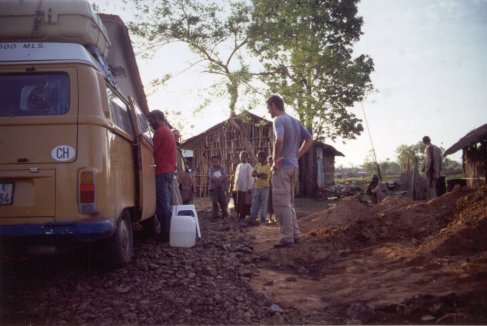 |
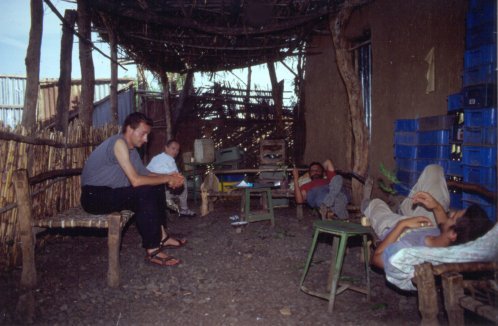 |
So we waited for the five days. We did not know at the time that it would be five days then of course. This is the "Lounge "of the best hotel in town. At least we got cold drinks and a leafy branch to keep the flies away. Coljard on the left had been here six days before us. |
| On our last night in Shahede, after the immigration man had arrived, we raided one of our favorite haunts - another hotel bar (Shabeen would be the correct word in South Africa). I took over the bar with Robert, who was in his second year on the road on a motorbike heading off around the world. | 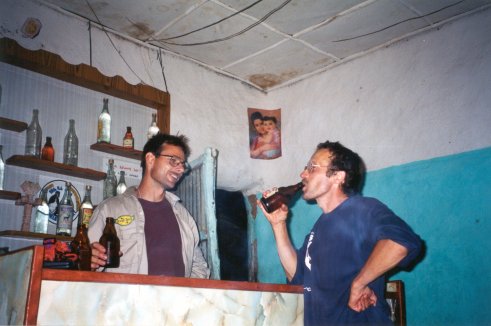 |
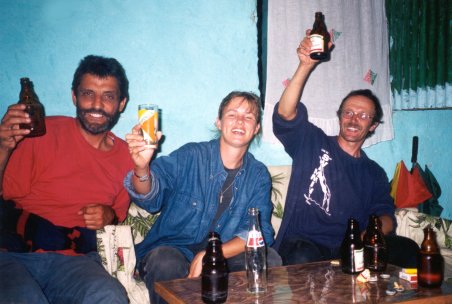 |
It was such a good party that I have added two pictures. Here you can see Alfons, who crossed Sudan with us, Daphne (Rob's wife) and off course Rob. The beer here is St Georges named after the dragon slaying knight in armor. It didn't do me too good though as you can see in my diary. |
| In Ethiopia coffee is very important. It is never taken lightly and each time coffee is taken it is accompanied by a ceremony. Fresh beans are roasted and ground and coffee is made very strong. Each person has three cups, one for God, one for your Family, and one for you. It is really great - here you can see an Ethiopian lady preparing for a ceremony with all the paraphernalia required. Children never drink coffee. | 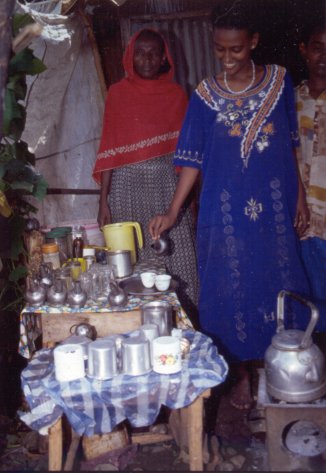 |
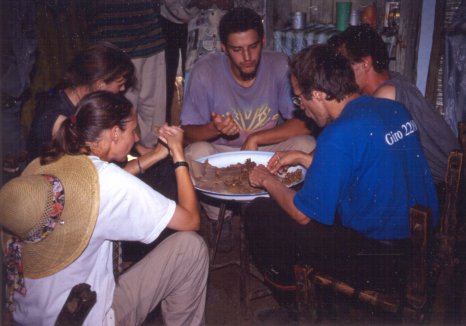 |
The staple diet in Ethiopia is a bread made from a wheat called Teff. The teff is allowed to ferment for three days and it is baked into a large pancake like bread called Injera. Injera is eaten with either a hot spicy vegetable or a meat like goat or chicken. This is us (Renee, Daphne, Felix, Coljard and Rob) eating one Injera meal. You all share from one plate. |
| Gondor, about 150km East of Shahede and the Sudan border has some monuments. There is a compound filled with castles called the Royal Enclosure. This was built by King Fasil and the next few generations of Kings. It is quite strange - if these had been in Europe they would be filled with tourists - we were the only ones here. I suppose a war in the country doesn't do much get people to come visit. | 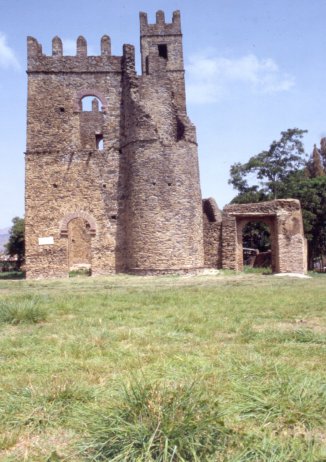 |
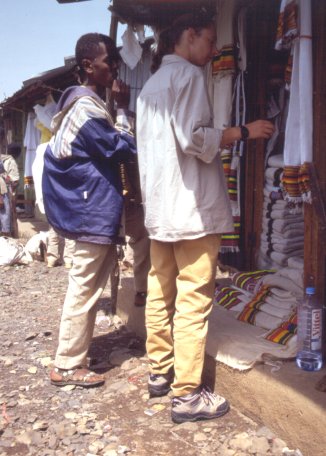 |
Renee shopping at the Gondor market for some woven cloth. The Ethiopians wear some colorful clothes. Renee is with David, a young boy of about fifteen who became our official guide through the streets of Gondor. Everyone in town knew David so it was good to have him with us. |
| In Gondor there is a well known church, the Debrah Biran Selasie church. This church is covered with painted cotton which is pressed into the ceiling and walls. Here you see some of the Cherubs which are painted on the roof. | 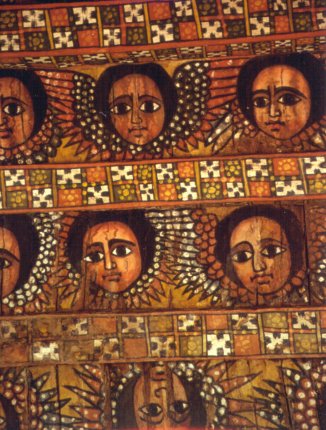 |
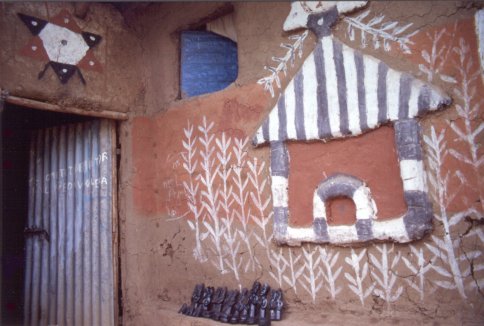 |
The history of the Jews in Ethiopia is well known. A few kilometers North of Gondor is a village which was once occupied solely by Jewish Ethiopians. These Jews were evacuated back to Israel years ago and now there is one lonely family living there. This picture shows her house, you can see the Star of David on the wall above the door. |
| About 120km North of Gondor lies the Simien Mountains. These are awesome mountains where the high plateau of Ethiopia drops down into the plains reaching towards Eritrea. Most of this area is generally over 4000m. Here we are camping at Chenak camp. As you can see we got here by car. There is now a road (a bad one) that allows for the World Food Program trucks to get to the people. | 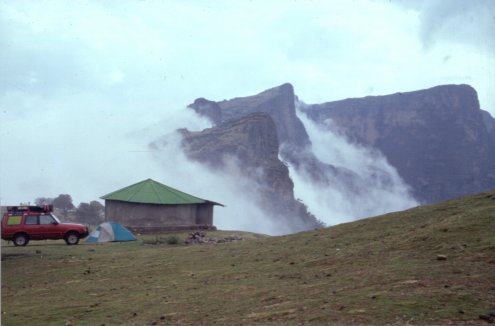 |
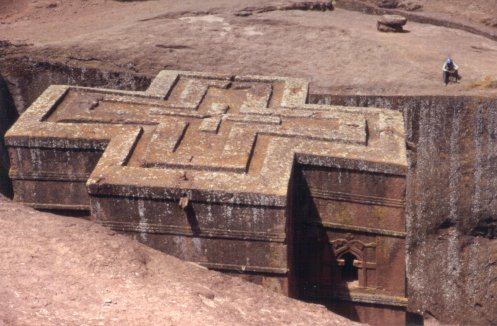 |
Lalibela lies 600km North of Addis Ababa and is not too easy to get to but it has an amazing group of churches. These churches are monolithic (made of one item) buildings dug and hollowed out of the rock floor of the hill sides. There are 15 of these churches in all. It is rumored that they were built with the help of the angels. This picture shows the roof of the most famous church, that of St George. This is about three stories high (you can see a man sitting on the edge of the pit). |
| Lalibela is a very holy place. The village is filled with holy men, priests and nuns. Some of them live a very sparse life. This picture shows a hermit, meditating on the bible, outside a hole in the church pit wall where he sleeps. These holes are long enough to lie down in and high enough to crawl into. These are the holiest of the holy men, the men who live in the walls of the churches. | 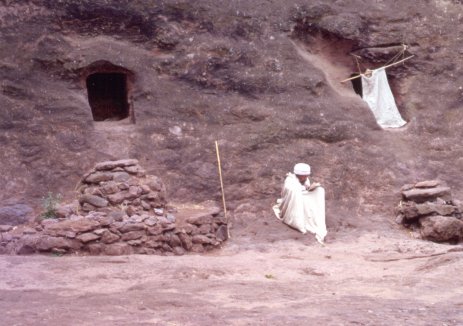 |
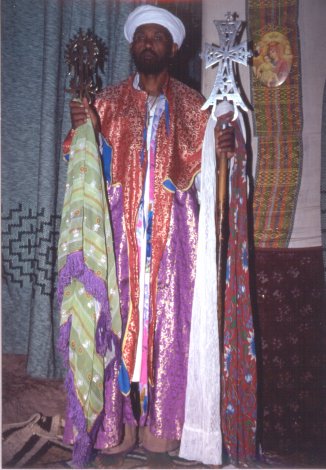 |
Each of the churches at Lalibella are serviced by a priest. The priests are very colorful people and are very proud of their church. Each priest has his own large cross. The churches are built in the manner of the Old Testament churches of three inner sanctums. As a lady Renee was only allowed passed the first one. Only the priest can go into the third chamber. |
| Lake Awasa, 200km South of Addis Ababa, is in the Rift valley and forms part of a chain of lakes that line this huge valley. The lakes are filled with fish and the locals make use of this resource for their own sustenance. Though most fisherman go out in boats and fishing is done on a large scale, this picture shows a lone fisherman near the shore of the lake. | 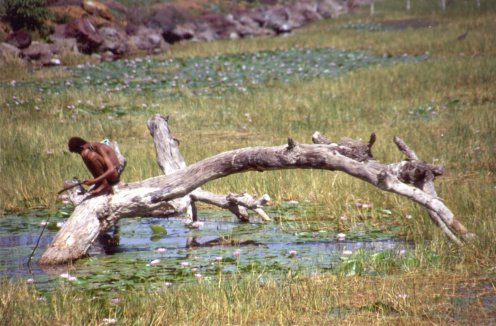 |
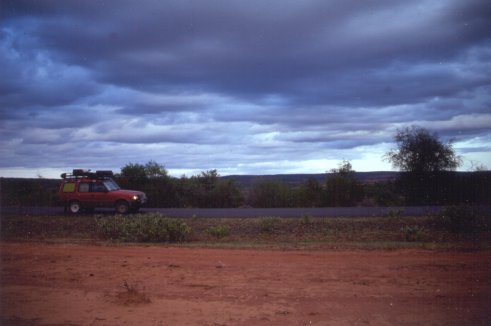 |
The roads in Ethiopia are generally hell. For most of our time in Ethiopia we managed 20km per hour. Oddly enough the road between Yavello and Moyale (230km) on the Kenya border is great. Here you can see the storms brewing and us on the way South to a new country. We were in Ethiopia one full month and ready to move on. |
 |